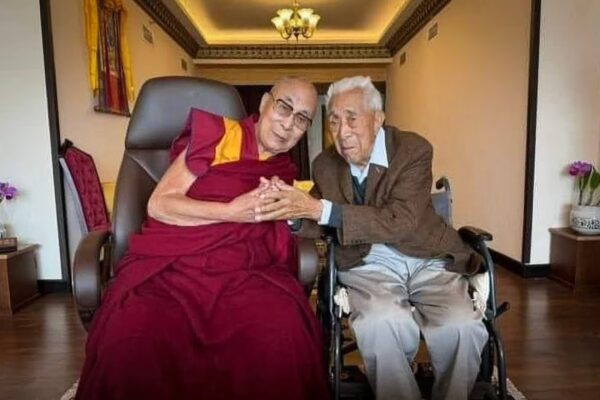Tibetan netizens mourn death of ‘patriotic singer’ Lobsang
Read RFA coverage of this story in Tibetan. Popular Tibetan singer Lobsang, who was frequently detained and interrogated by Chinese authorities for music that was patriotic and critical of Chinese policies, has died following a prolonged illness, according to two sources, one in Tibet and one in exile. He was 39. Lobsang, who became famous at a young age and produced eight albums, died on Feb. 18 of a liver disease at a hospital in the city of Chengdu in southwest China’s Sichuan province, the source in Tibet said, speaking on condition of anonymity for safety reasons. “Due to political content in some of his lyrics, he was repeatedly summoned for questioning and detained by Chinese authorities,” the source said. Hailing from Kyungchu county in Sichuan province, Lobsang dedicated his life to music, releasing numerous albums, and was suspected of activism by the Chinese government because of the political content in his works, a source in exile told RFA. Authorities restricted the singer from traveling to Lhasa, capital of the Tibet Autonomous Region, and other regions, he said. “Though he wasn’t imprisoned for extended periods, he was frequently questioned and detained,” the source said. Social media tributes Following Lobsang’s passing, Tibetans inside Tibet, in exile and across China expressed their grief on social media. “I grew up listening to his songs since childhood,” one Tibetan wrote. “I am deeply saddened by the passing of this singer who cared so deeply for the Tibetan people.” On his eight albums and in numerous other recordings, Lobsang sang songs that resonated deeply with Tibetans, such as “Three Camps of Sun and Moon,” which referenced the Dalai Lama with the lyrics, “The King of Snow Land, Tenzin Gyatso, coming to Tibet, may his lotus feet remain stable.” His music often touched on Tibet’s struggle, such as “Suffering and Happiness of the Snow Land,” “World Peace,” “Future of Tibet’s Children,” “Protector,” and “Fate of Tibetans.” Due to his powerful lyrics, Tibetans inside Tibet referred to him as “patriotic singer Lobsang.” Another netizen wrote: “His singing was as warm and familiar as a teacher, accompanying us through countless unforgettable times.” A Tibetan inside Tibet, speaking in a WeChat voice chat group, said Lobsang’s health fluctuated, sometimes appearing stable, while at other times deteriorating, until he died. Kunchok Tsering, a Tibetan living in India who collects and archives songs and writings by Tibetan artists in Tibet, said he considers Lobsang to be one of the region’s best singers. “His songs often praise His Holiness the Dalai Lama and reflect love for his country, Tibet, so his courage and lack of fear in creating such music were commendable,” Tsering said. Tsering cited Lobsang’s song “Nyi-Dha-Kar Sum,” meaning “Sun-Star-Moon,” paying homage to Tibet’s three spiritual leaders — the sun representing His Holiness the 14th Dalai Lama, the Moon symbolizing the Panchen Lama, and the star representing the Karmapa, head of the 900-year-old Karma Kagyu school of Tibetan Buddhism and one of Tibet’s highest-ranking religious figures. “His lyrics are deeply powerful,” he said. Translated by Tenzin Dickyi for RFA Tibetan. Edited by Roseanne Gerin and Malcolm Foster. We are : Investigative Journalism Reportika Investigative Reports Daily Reports Interviews Surveys Reportika


